1.1.2 Cnidarians
1/28
There's no tags or description
Looks like no tags are added yet.
Name | Mastery | Learn | Test | Matching | Spaced |
|---|
No study sessions yet.
29 Terms
cnidarian size range
microscopic to very large
cnidarian body plan
very simple
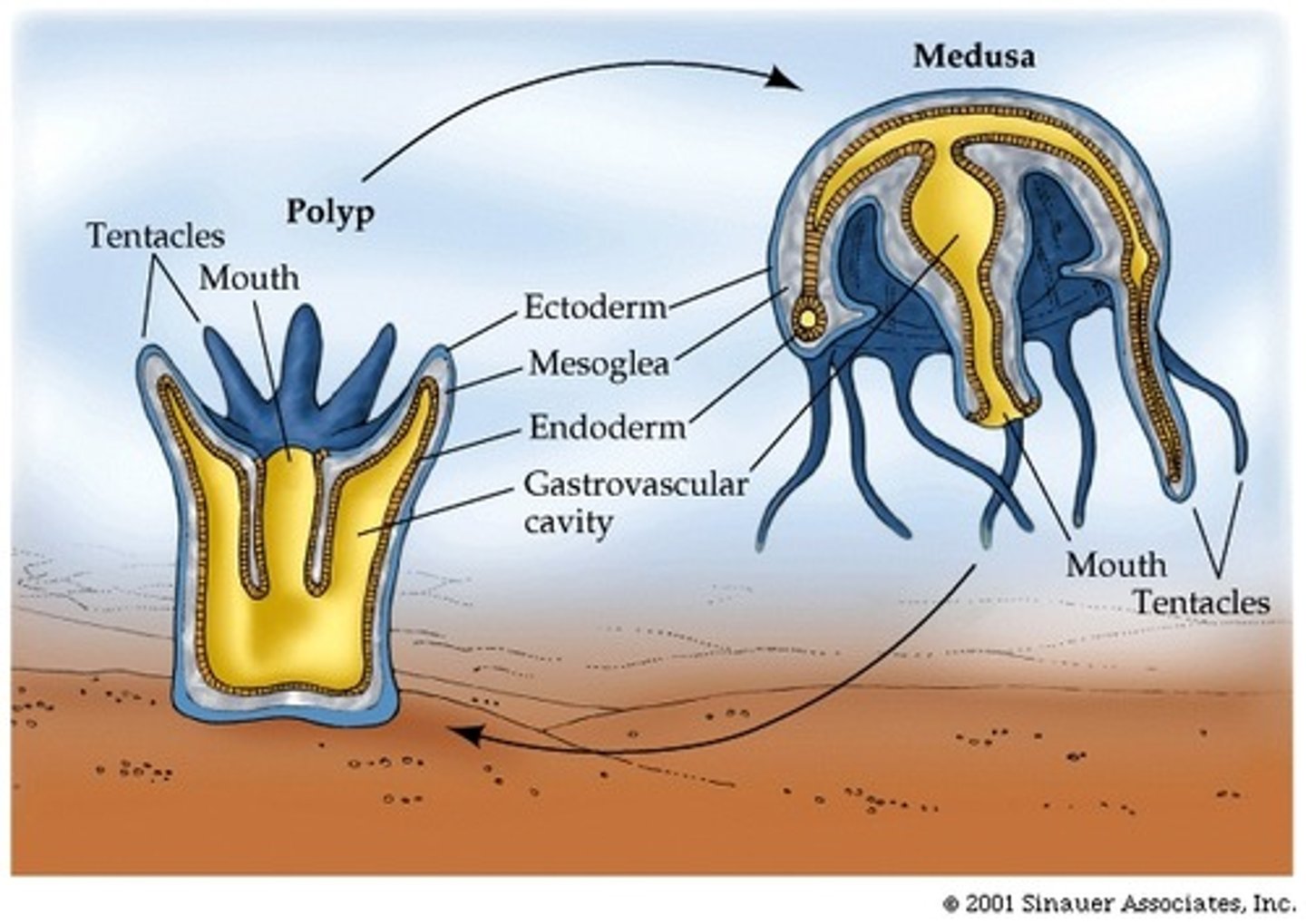
cnidarian symmetry type
radial
Cnidocytes
stinging cells
cnidarians lack
head, respirtatory system, circulatory system
Jellyfish or
medusa
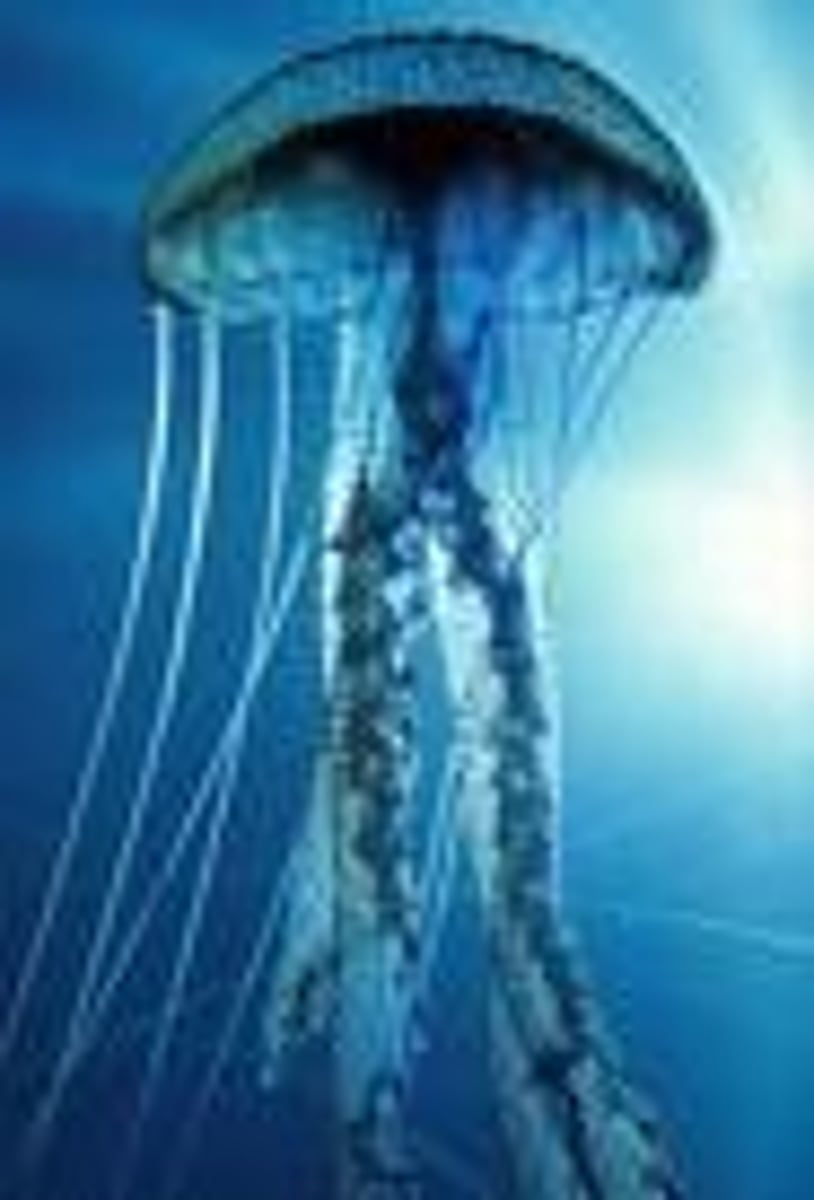
enenemy or
polyp
polyp anatomy
tentacles, mouth, gonads, column, pedal disc
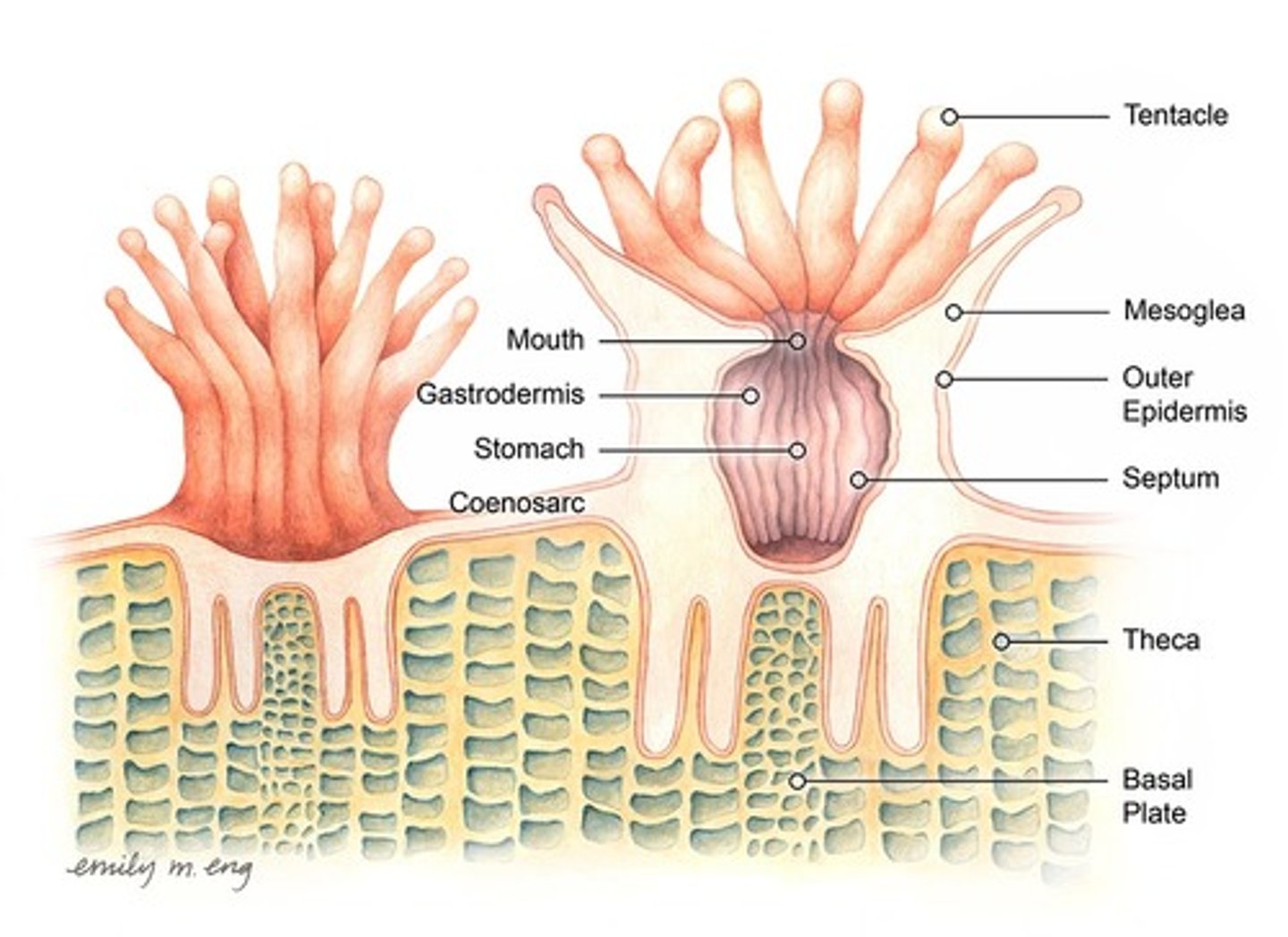
medusa anatomy
manubrium, gonads, tentacles
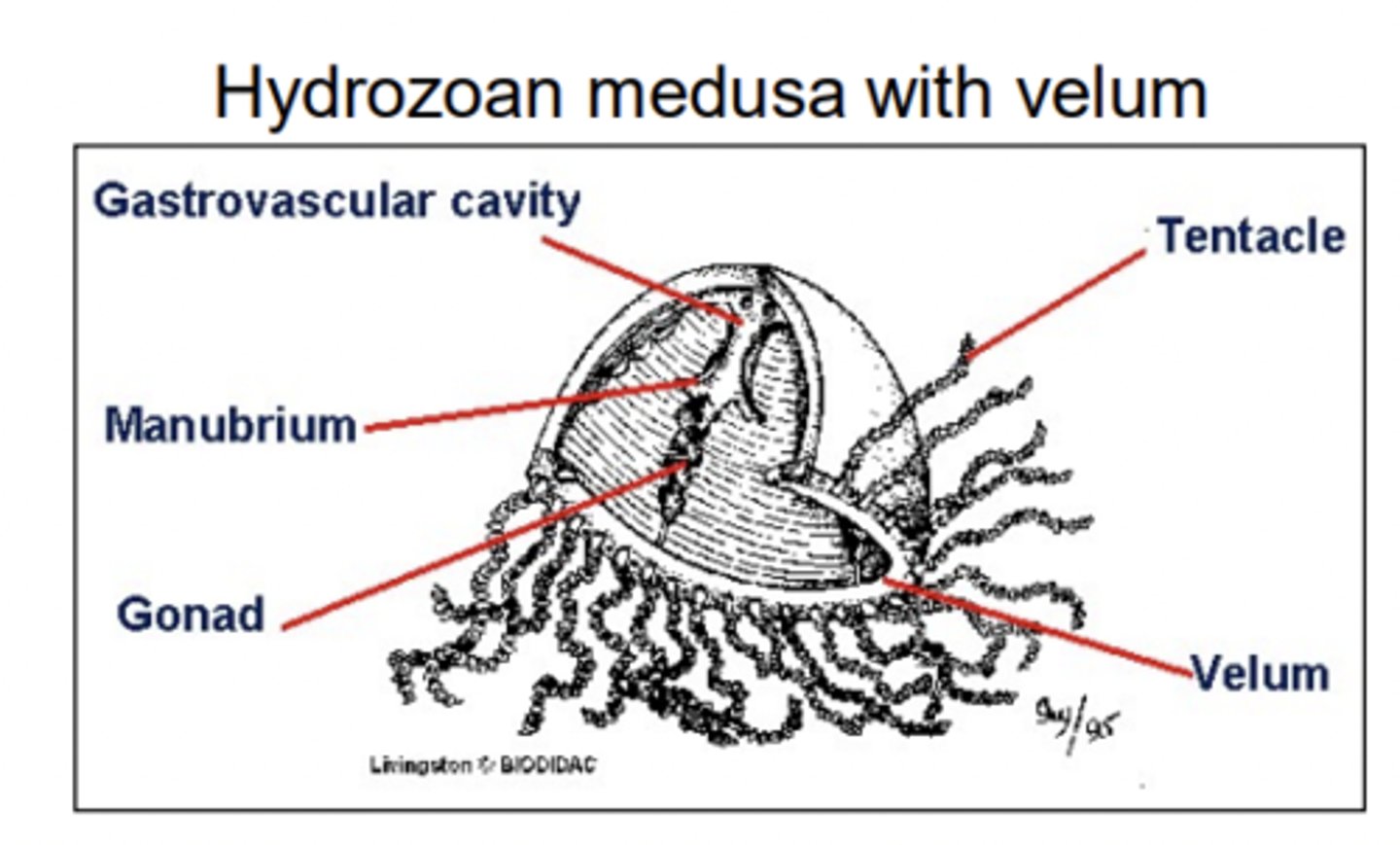
colonial polyps
work together for feeding, defense, and reproduction
Cnidocytes (unique to cnidarians) functions
prey capture, defense, locomotion, attachment
cnidarians reproduce
asexually and sexually
asexual reproduction
buds can break off and live alone, can split into 2
sexual reproduction
inject sperm into another
4 groups of cnidarians
1)Hydroids
2) Anemones, corals and sea pens
3) Box Jellyfish
4) Jellyfish
Freshwater Jelly (Hydroid)
invasive to America
Hydra (Hydroid)
does not age
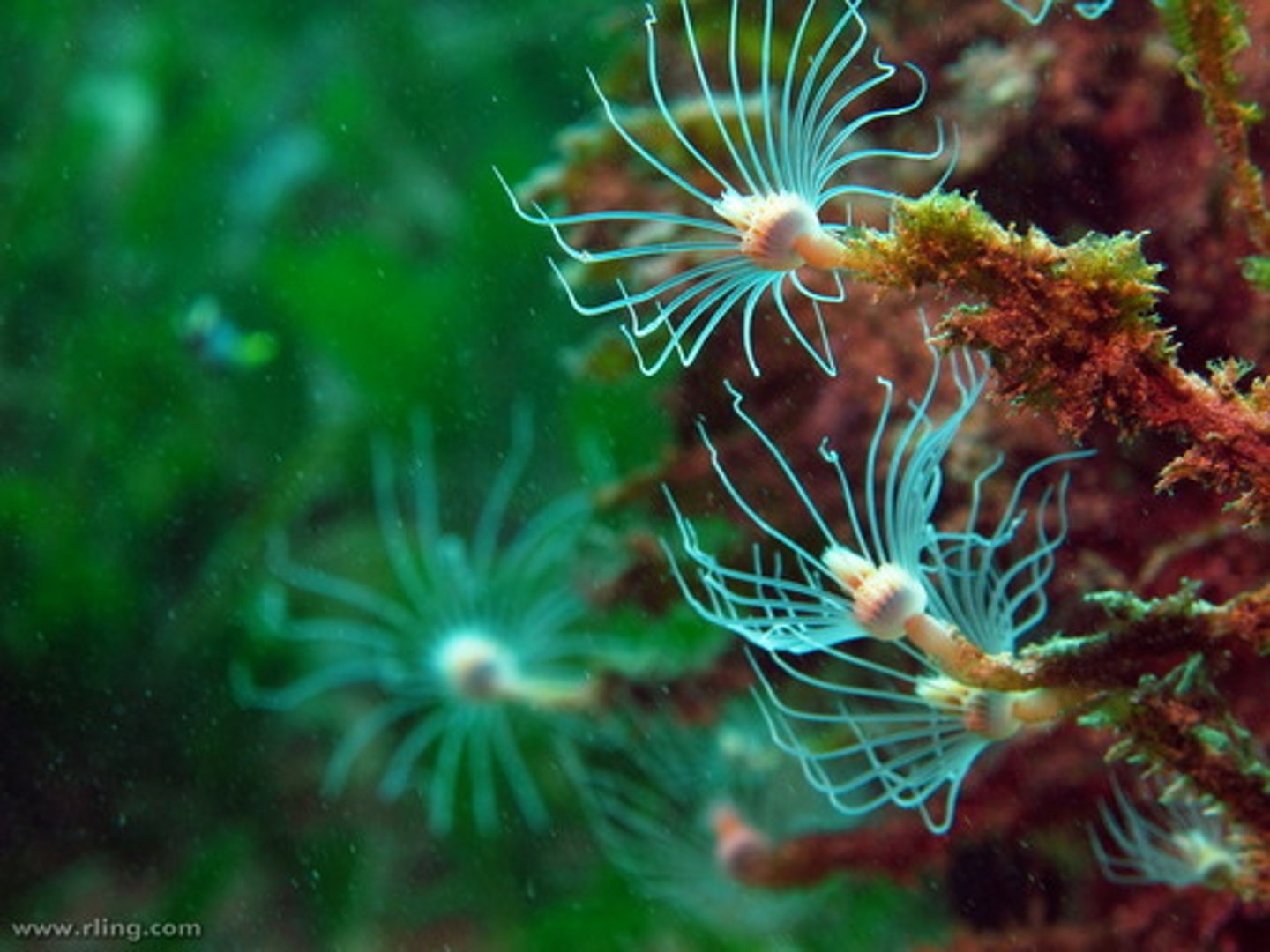
By-the-Wind Sailor (Hydroid)
photosynthetic symbionts, eat plankton, harmless to humans, hydroid colony
Portugeuse Man O' War (Hydroid)
colonial (zooids), eat fish and plankton, toxic
Sea Fan (A,C, SP)
produce calcarious house around them, slow to grow
Sea Pen
lives on ocean floor, lives in colonies
tube anemones
toxic tentacles

stony corals
reef building corals

sea wasp (box jellyfish)
tracks prey and has eyes

Irukandji (box jellyfish)
highly venemous
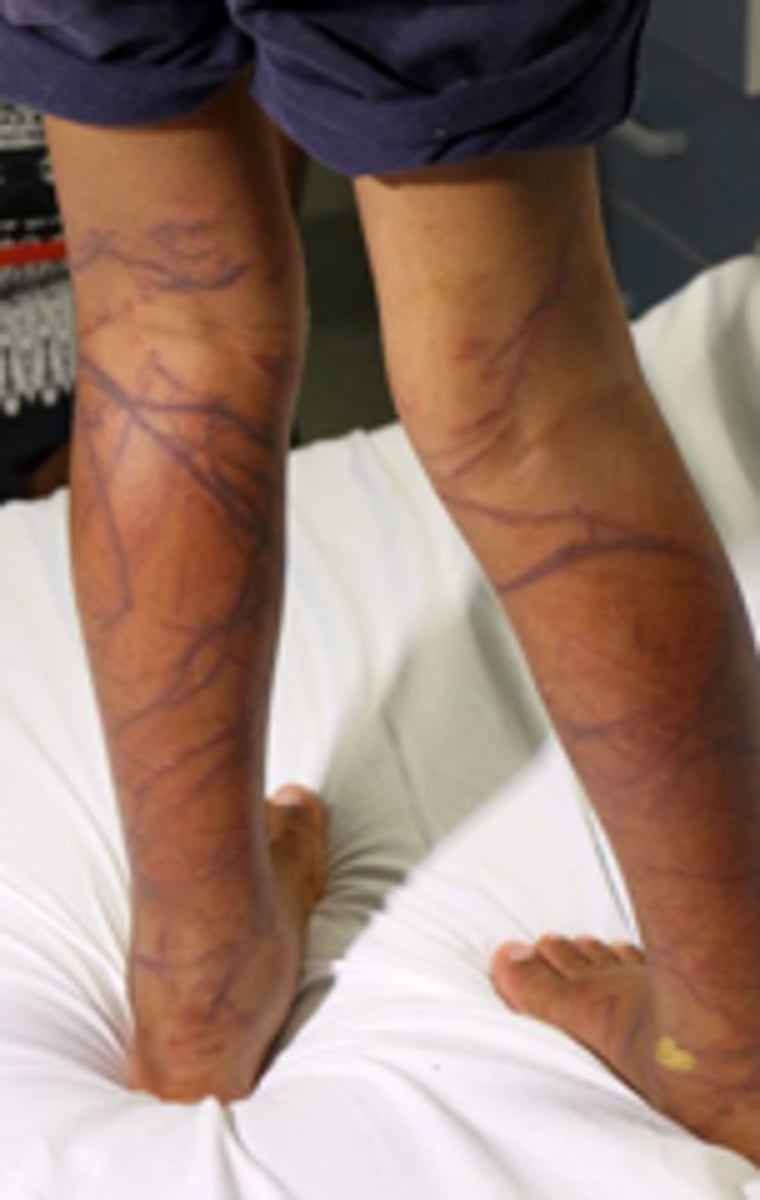
true jelly fish have over
200 species
moon jellyfish (true jellyfish)
common for research, sexual dysmorphism (difference between sexes)

Lion's Mane Jellyfish (true jellyfish)
tentacles up to 127 feet
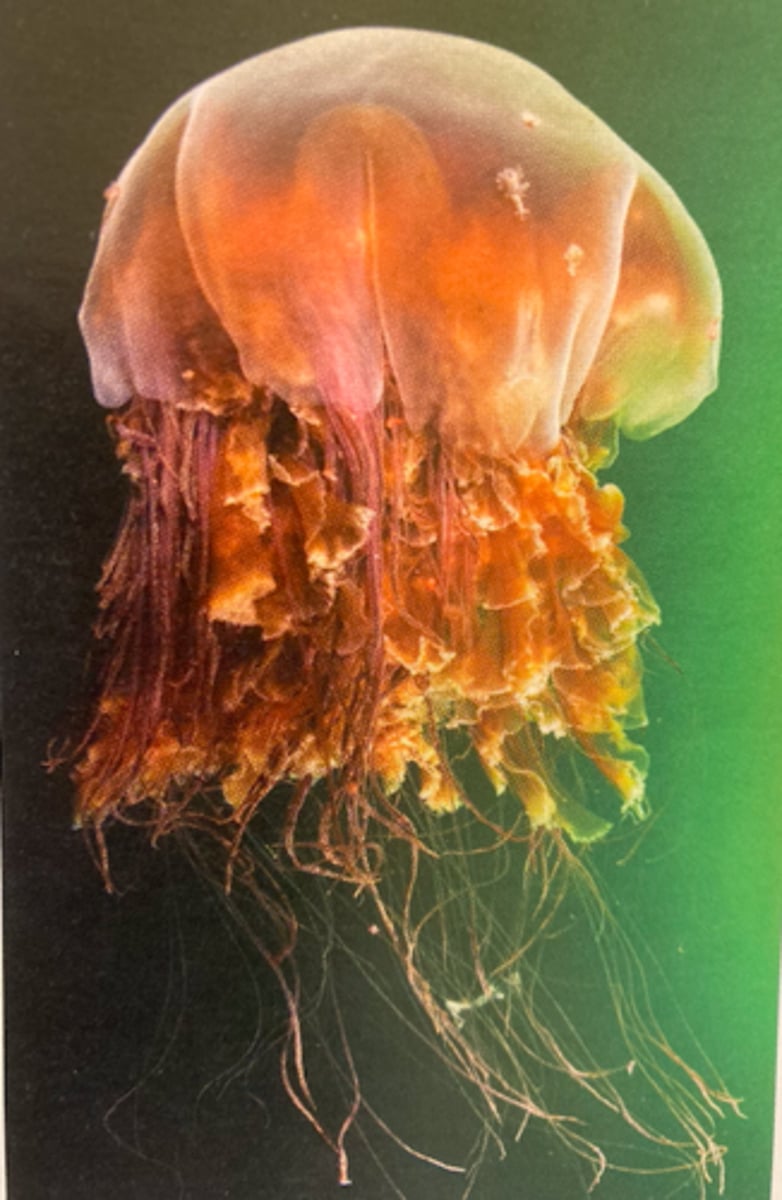
two other examples of a true jellyfish
canonball jellyfish and bay nettle